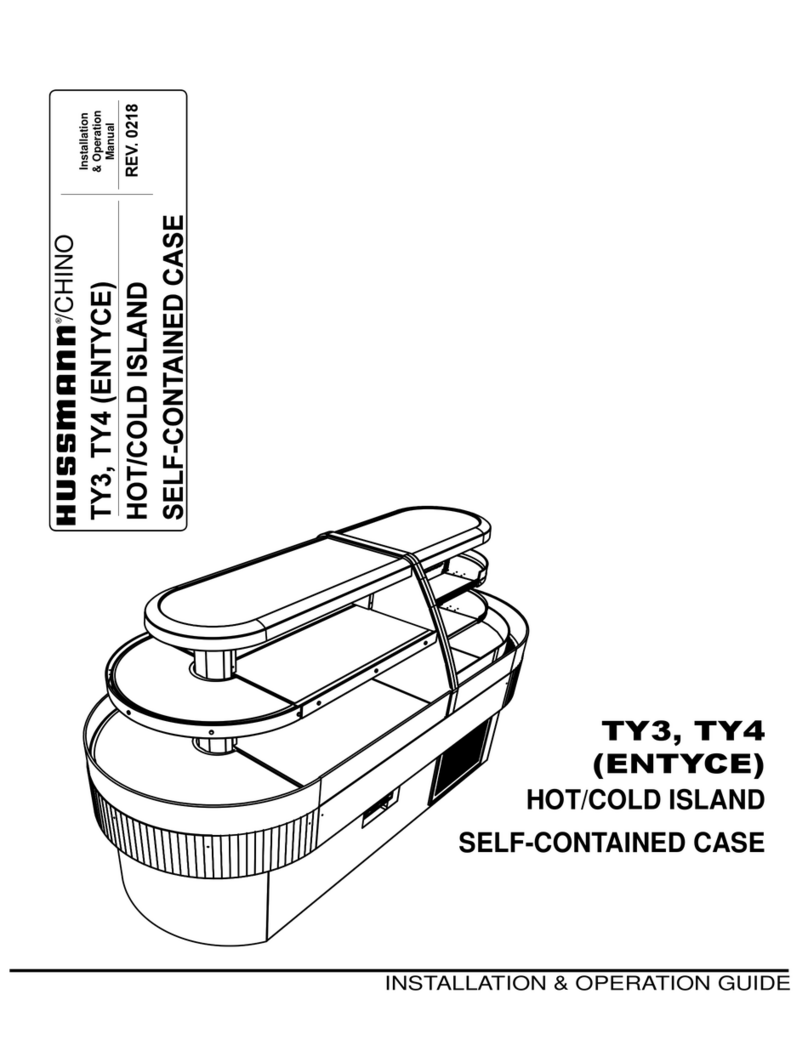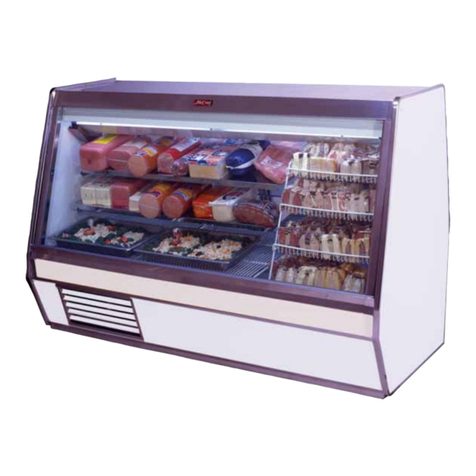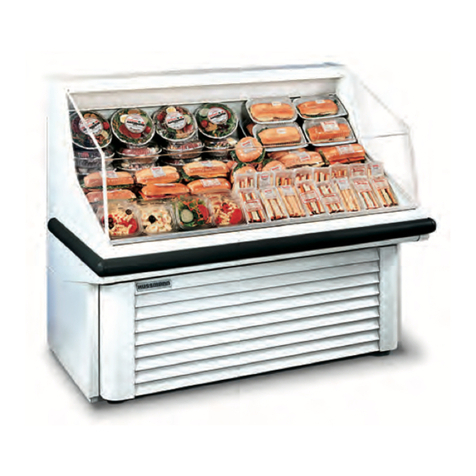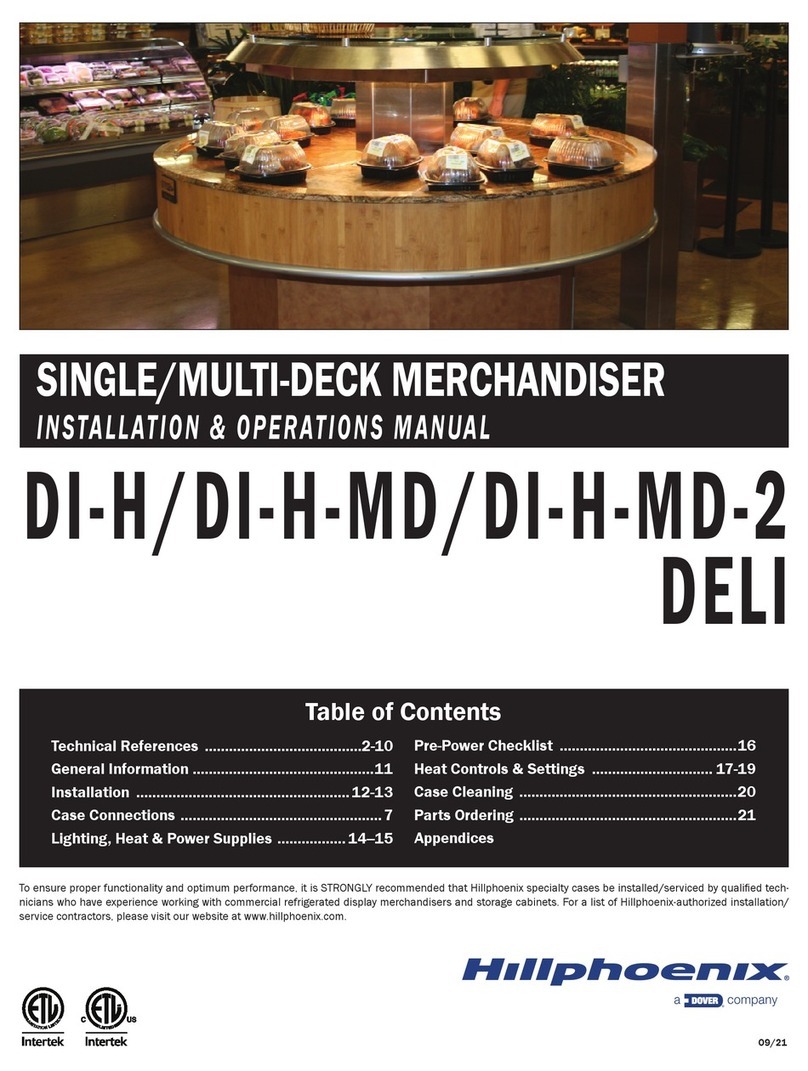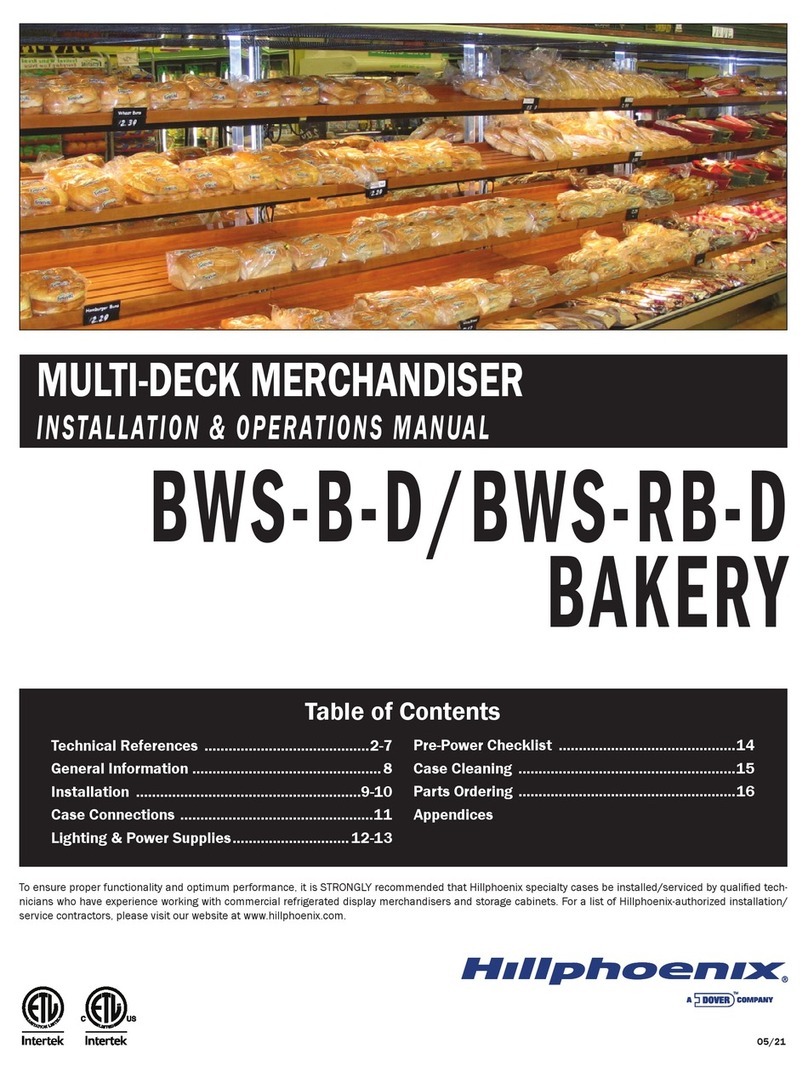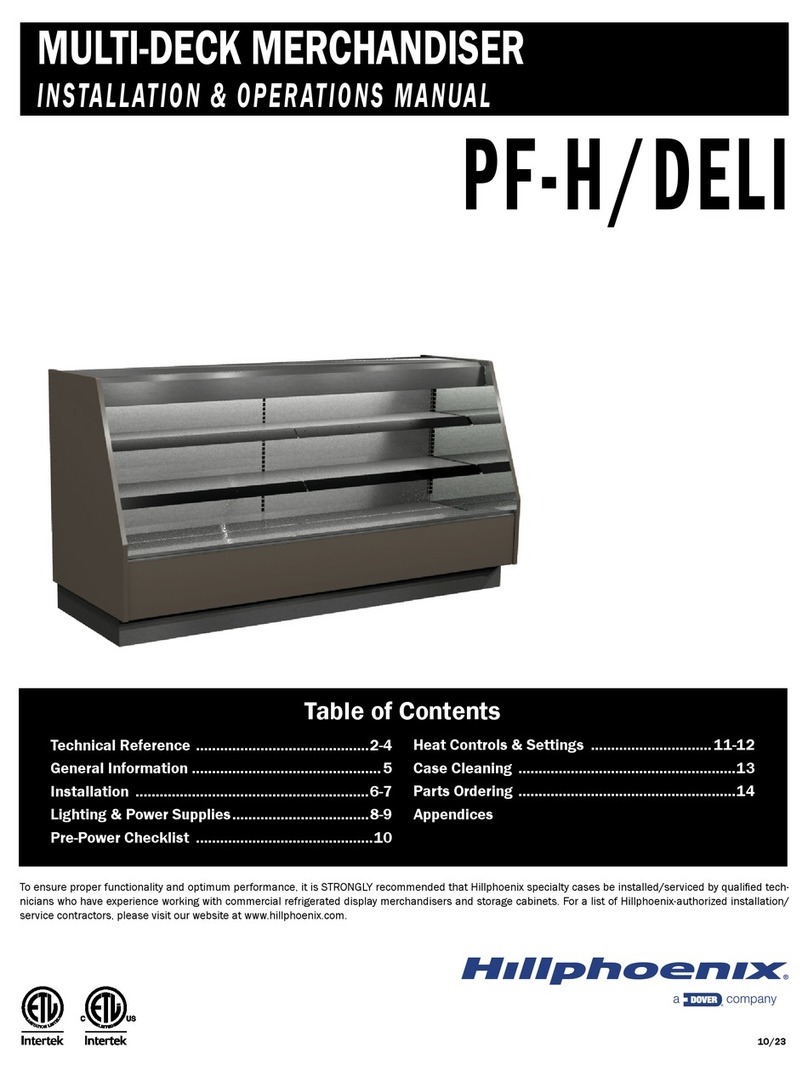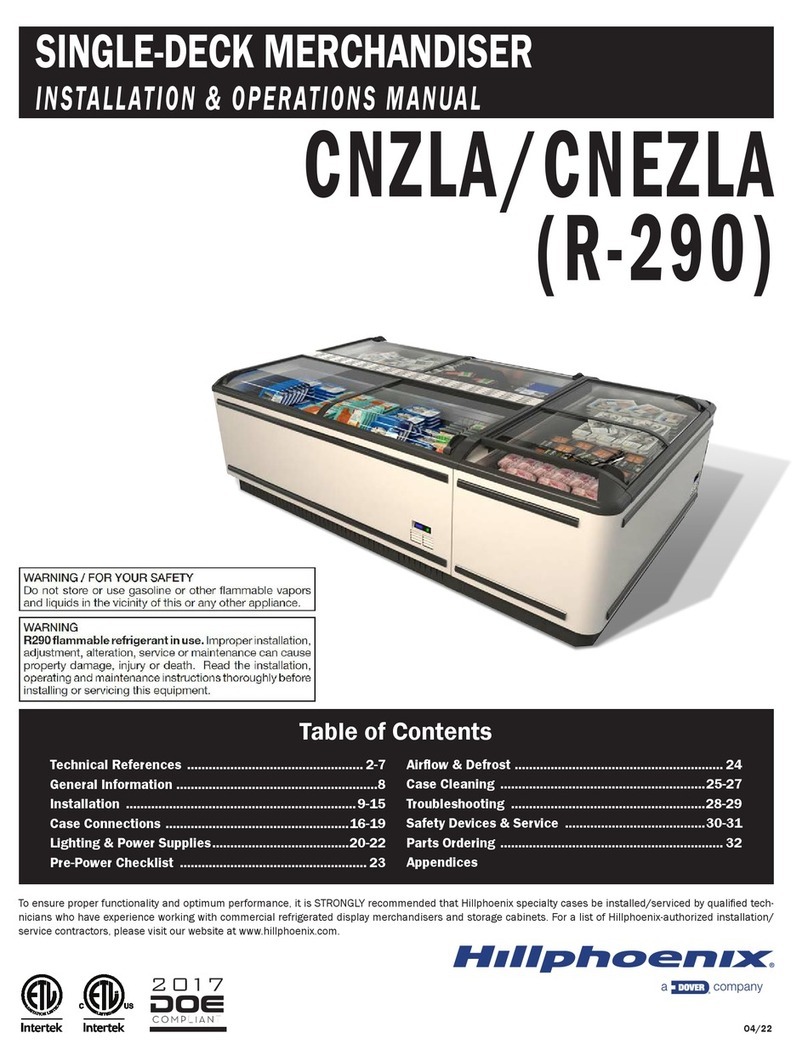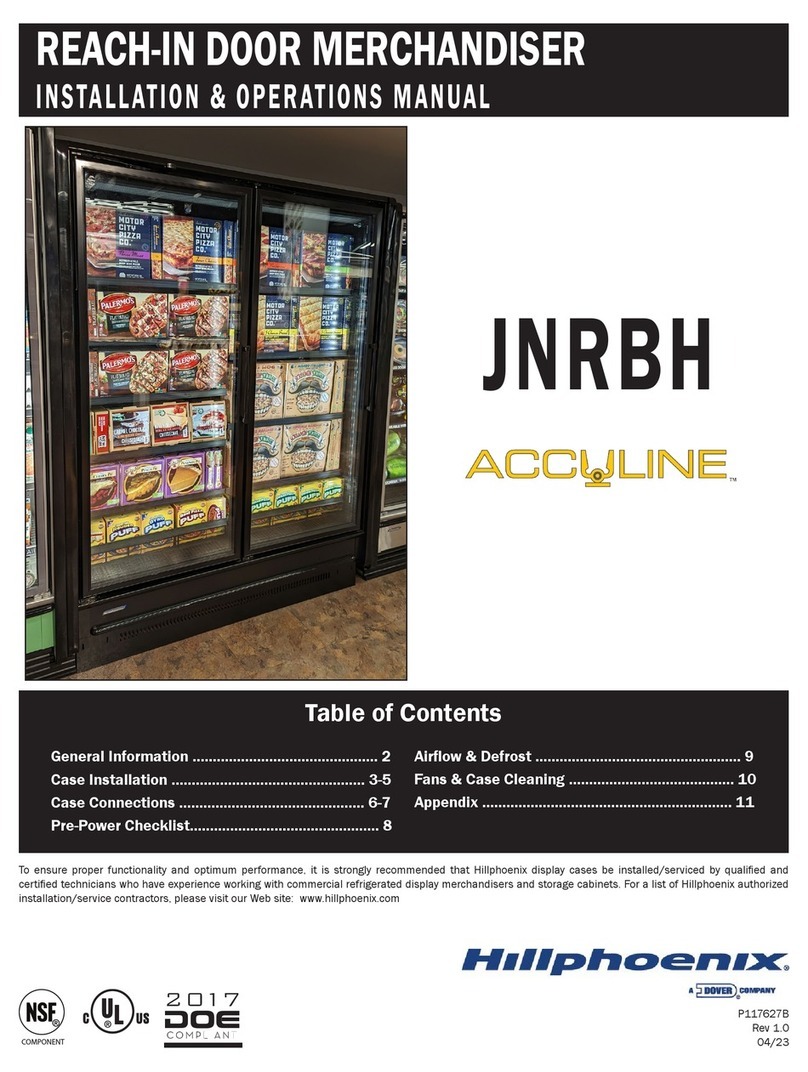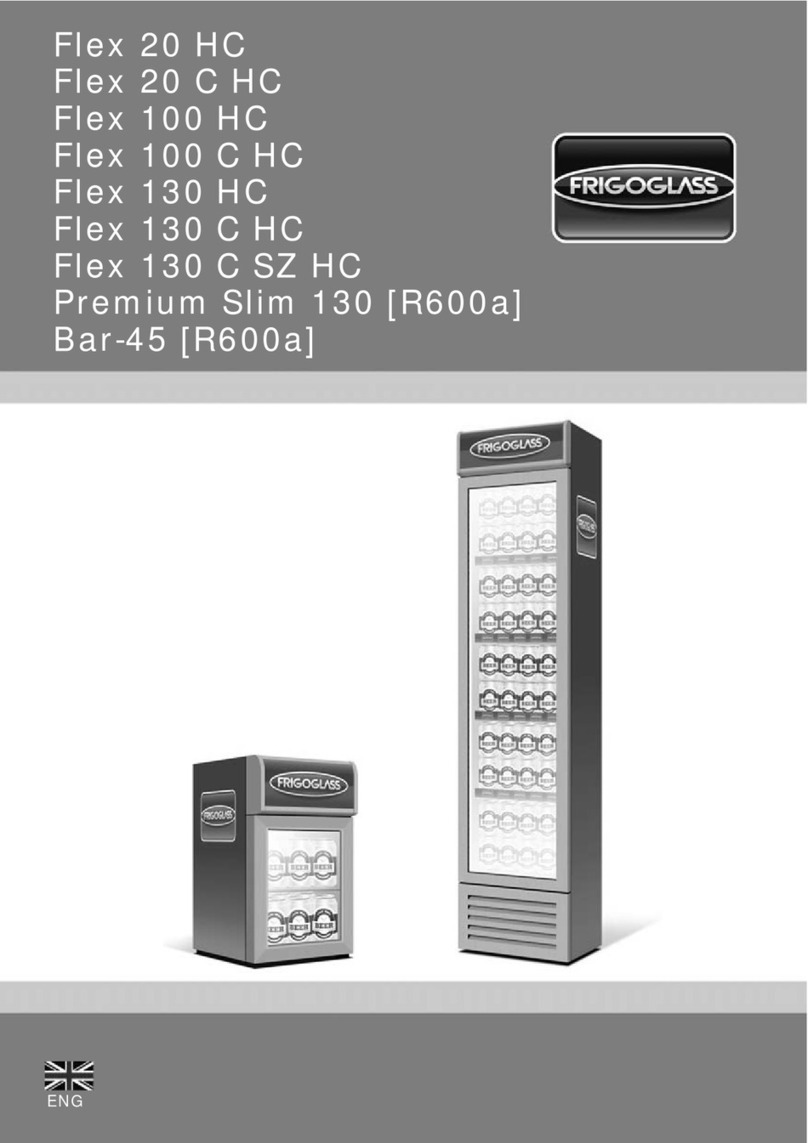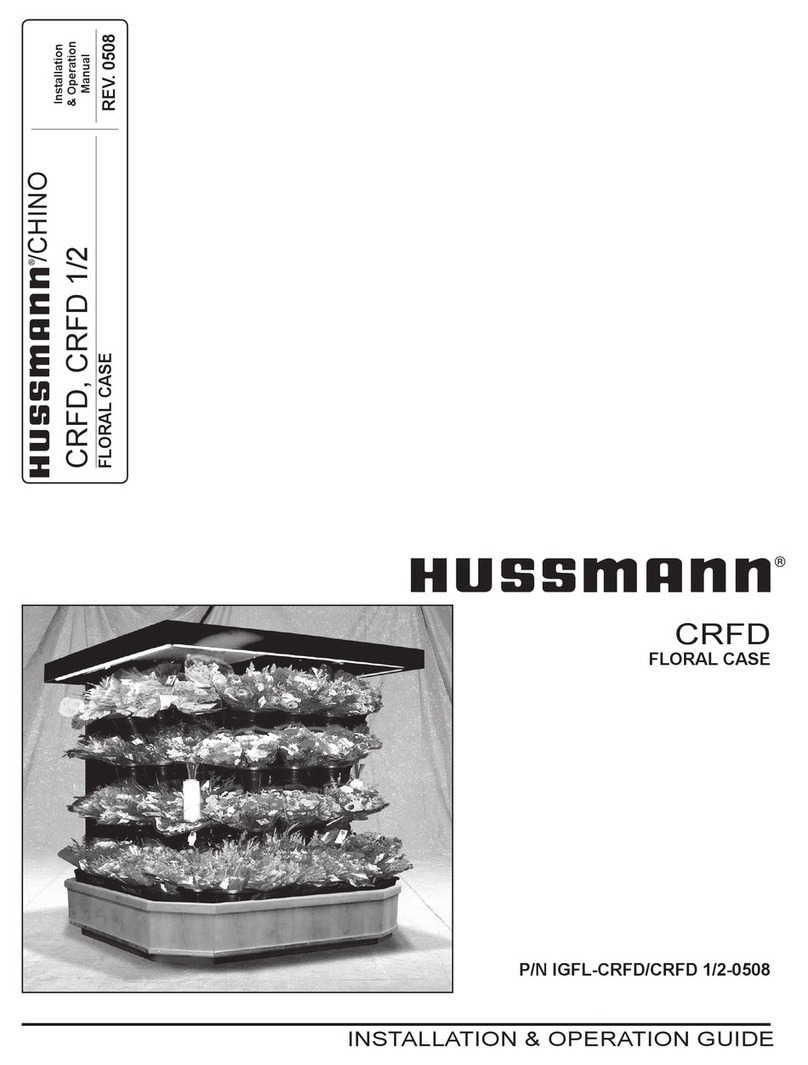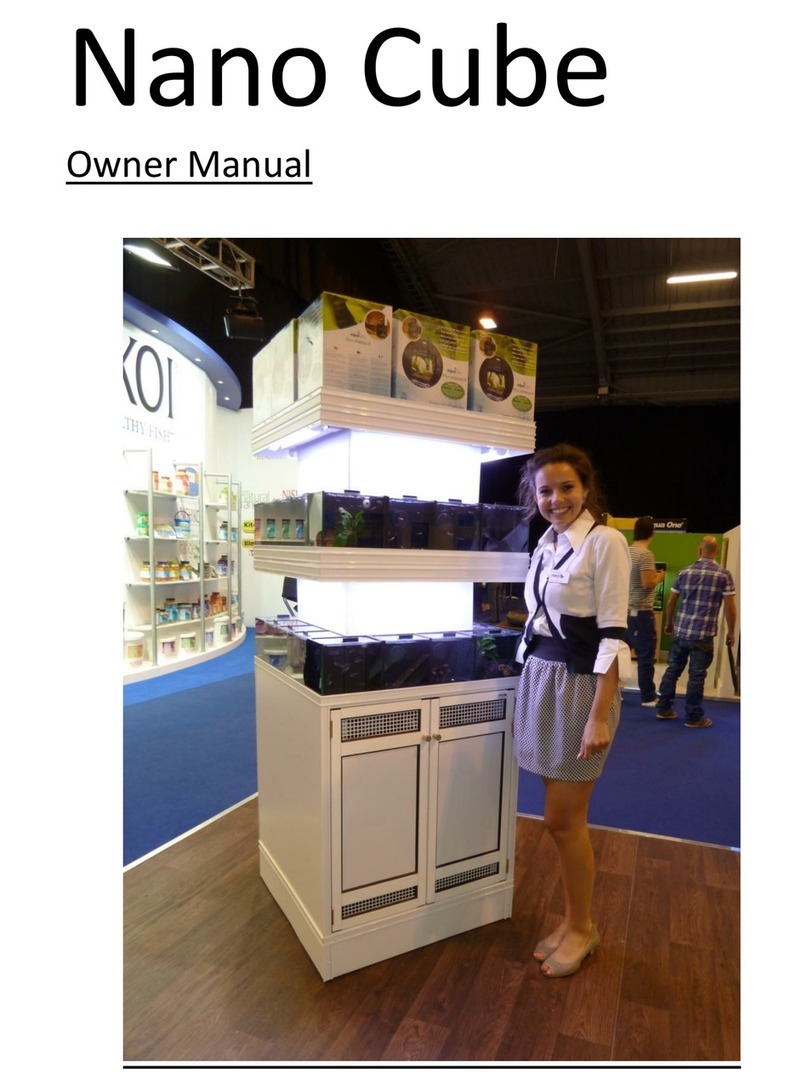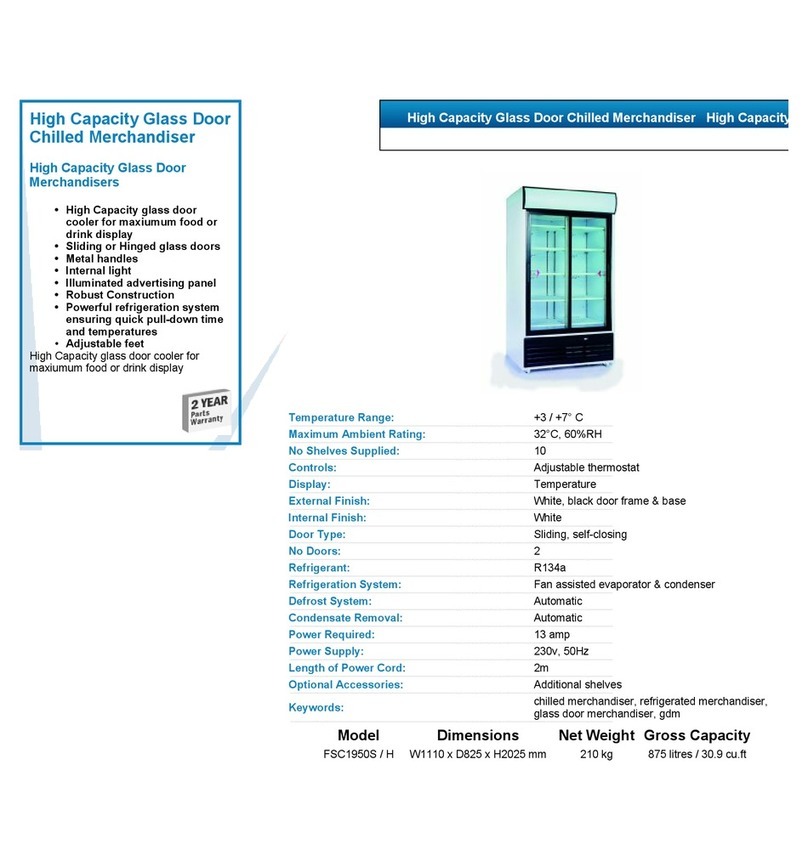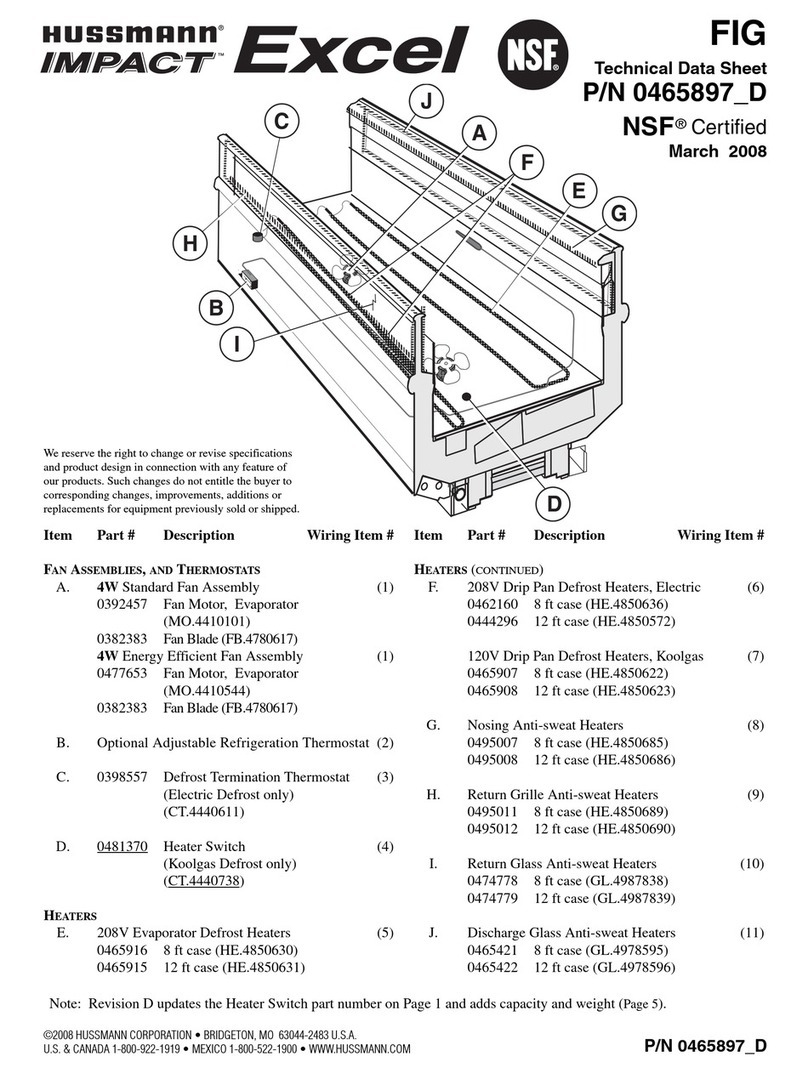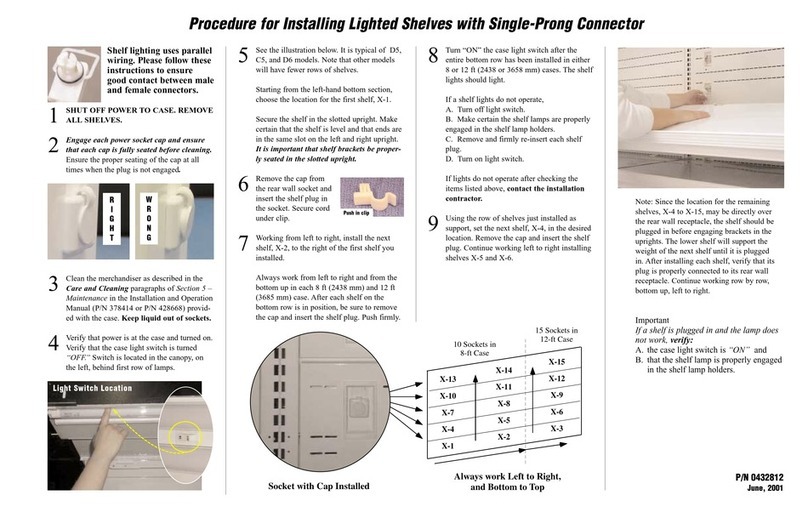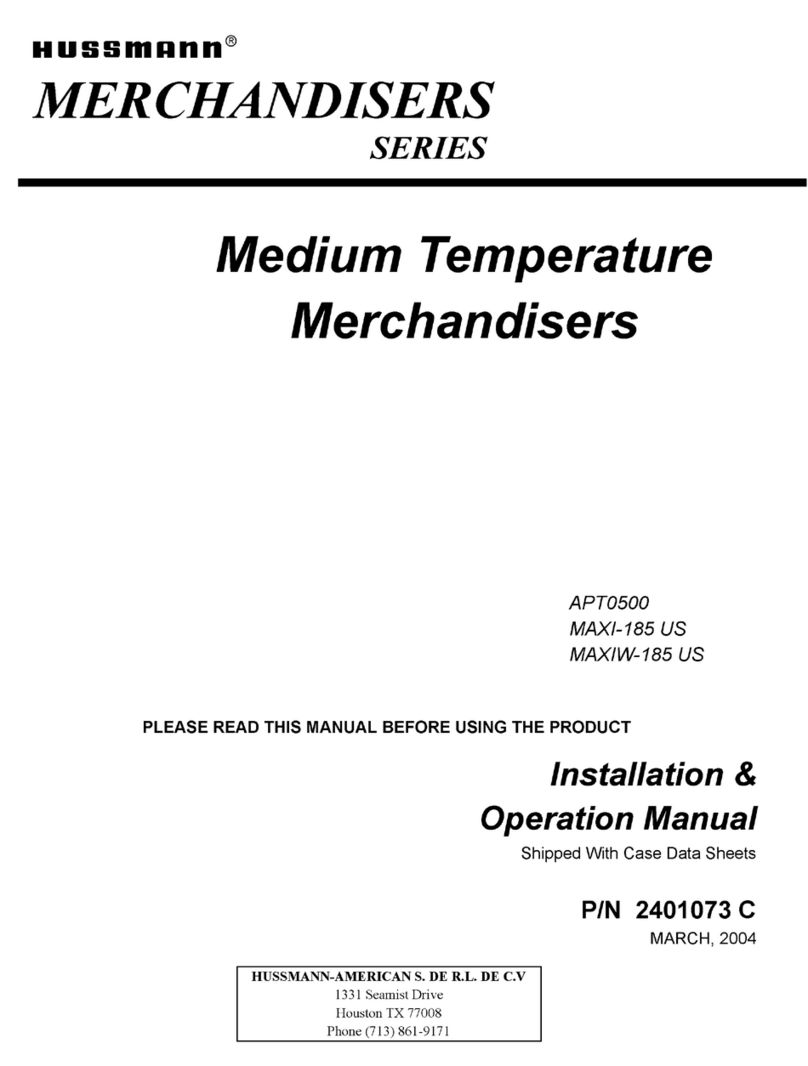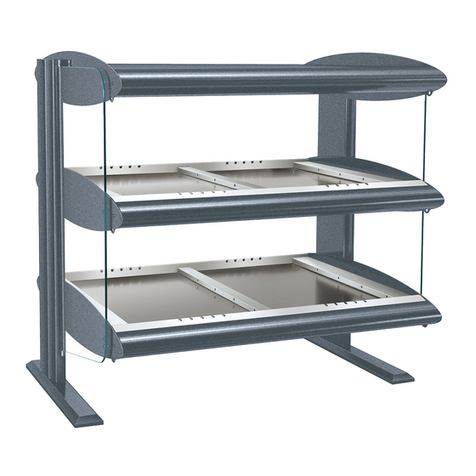
IMPORTANT NOTICES iii
DANGER!
Indicates an immediate threat of serious
injury or death if all instructions are not fol-
lowed carefully.
CAUTION!
Indicates the potential threat of injury if all
instructions are not followed carefully.
ATTENTION!
Indicates an important point of information
that is key to ensuring proper case func-
tionality.
PRECAUTIONARY NOTICES
At Hillphoenix®, the safety of our customers and employ-
ees, as well as the ongoing performance of our products,
are top priorities. To that end, we call out important mes-
sages in all Hillphoenix installation and operations hand-
books with an accompanying alert symbol. All of these
notices are meant to provide information about potential
dangers to personal health and safety—as well as risks of
case damage—if the instructions are not carefully followed.
CAUTION!
Under no circumstance should any com-
ponent be replaced or added without
consulting Hillphoenix Field Service En-
gineering. Utilizing improper components
may result in serious injury to persons or
damage to the refrigeration system.
SERVICE NOTICE
To ensure proper functionality and optimum performance,
it is strongly recommended that Hillphoenix display cases
be installed/serviced by qualied technicians who have ex-
perience working with commercial refrigerated display mer-
chandisers and storage cabinets. For a list of Hillphoenix-
authorized installation/service contractors, please visit our
Web site: www.hillphoenix.com
LIABILITY NOTICE
For Cases with Shelf Lighting Systems
Hillphoenix does NOT design any of its shelf lighting sys-
tems or any of its display cases with shelf lighting systems
for direct or indirect exposure to water or other liquids. The
use of a misting system or water hose on a display case
with a shelf lighting system, resulting in the direct or indirect
exposure of the lighting system to water, can lead to a num-
ber of serious issues (including, without limitation, electri-
cal failures, re, electric shock, and mold) in turn resulting
in personal injury, death, sickness, and/or serious property
damage (including, without limitation, to the display itself,
to the location where the display is situated [e.g., store] and
to any surrounding property).
DO NOT use misting systems, water hoses or other devic-
es that spray liquids in Hillphoenix display cases with light-
ed shelves. If a misting system or water hose is installed
or used on a display case with a shelf lighting system, then
Hillphoenix shall not be subject to any obligations or liabili-
ties (whether arising out of breach of contract, warranty,
tort [including negligence], strict liability or other theories
of law) directly or indirectly resulting from, arising out of or
related to such installation or use, including, without limita-
tion, any personal injury, death or property damage result-
ing from an electrical failure, re, electric shock, or mold.
P079211M, REVO
R-744 (CO2) NOTICE
For Systems Utilizing R-744 (CO2) Refrigerant
For refrigeration units that utilize R-744 (CO2), pressure
relief and pressure-regulating relief valves may need to be
installed based on the system capacity. The valves need
to be located such that no stop valve is positioned between
the relief valves and the parts or section of the system be-
ing protected.
When de-energizing refrigeration units containing R-744
(CO2), venting of the R-744 (CO2) refrigerant may occur
through the pressure regulating relief valves. These valves
are located on the refrigeration system and not on the case
model. If venting does occur, the valve must not be de-
feated, capped, or altered by any means.
GLYCOL NOTICE
For Systems Utilizing Glycol Refrigerant
Use of glycol as a secondary refrigerant must be carried
out in accordance with the procedures that have been set
forth in the Hillphoenix Second Nature Medium Tempera-
ture Secondary Refrigeration Installation Manual, available
for download here: http://goo.gl/JIWd77
Additionally, Hillphoenix uses and recommends Dow gly-
col-based coolants, which contain specially formulated in-
dustrial inhibitors that help to prevent corrosion in our dis-
play merchandisers. Over time, the effectiveness of these
inhibitors deteriorates, increasing the chance for corrosion.
We recommend testing of glycol solutions annually through
the Dow lab. The service is free for systems containing
over 250 gallons of glycol coolants, while the cost is ap-
proximately $100 for smaller systems. For more informa-
tion, see Dow’s DOWFROST and DOWFROST HD Guide
here: http://goo.gl/v6i1iQ

